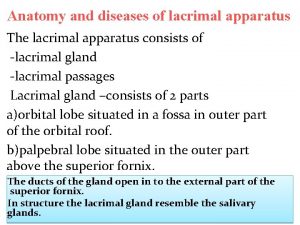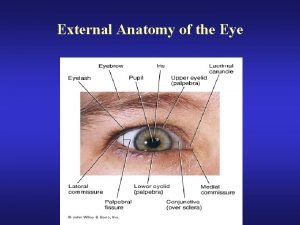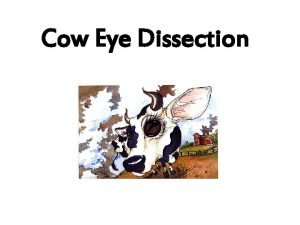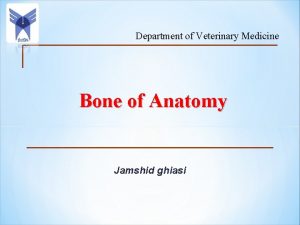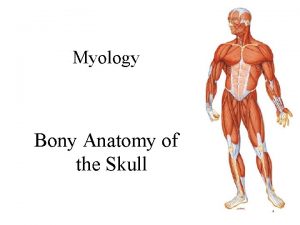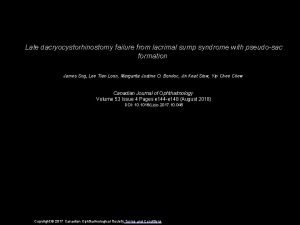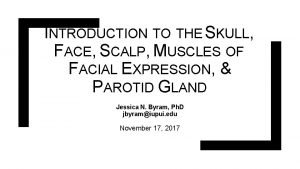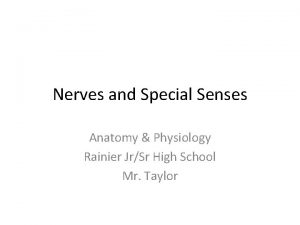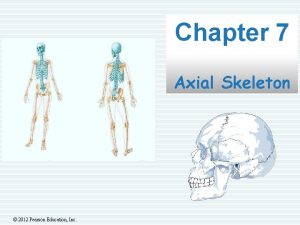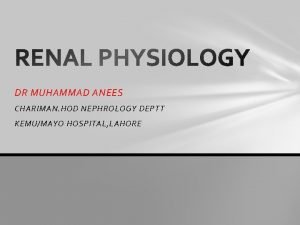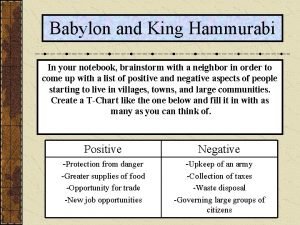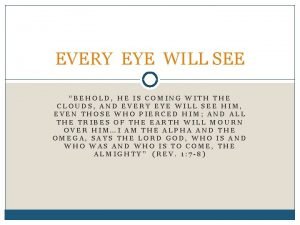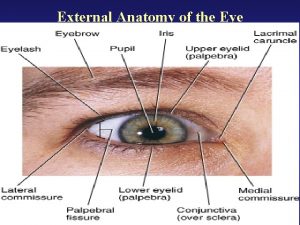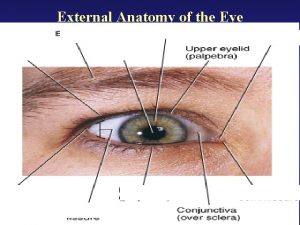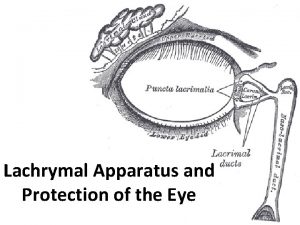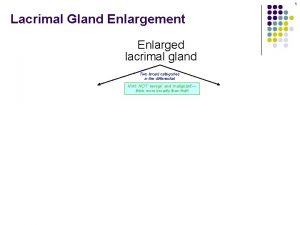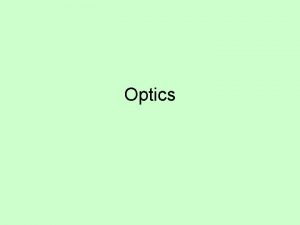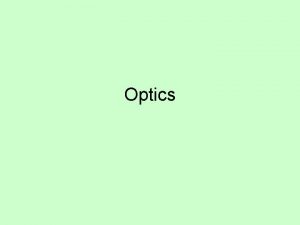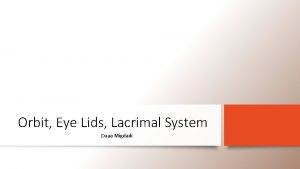External Anatomy of the Eye Lacrimal Apparatus of




















- Slides: 20

External Anatomy of the Eye

Lacrimal Apparatus of the Eye

Anatomy of the Eyeball Divided into three sections • Fibrous Tunic: (tough coat) Cornea Sclera • Vascular Tunic Choroid coat Ciliary Body (Ciliary muscle, Ciliary process) Iris • Nervous Tunic Retina

Accessory structures of the Eye from a sagittal view

Internal Anatomy of the Eye

Detail view of the anterior anatomy of the eye

Production of Aqueous Humor and Intraocular pressure 1. Ciliary Process: Produces Aqueous Humor 2. Posterior Chamber: Aqueous Humor flows from this chamber through the pupil in Anterior Chamber 3. Canal of Schlemm Reabsorbs Aqueous Humor Glaucoma: Increase in intraocular pressure due to build up of Aqueous Humor

Opthalmoscopic view of the retina showing the location of the Macula to the Optic Disc

Histology of the retina of the eye

Photomicroscopic view of the Histology of the Eye S = Sclera C = Choroid coat PE = Pigmented epithelium P = Outer segments of rods and cones O = Nuclei of rods and cones OPL = Outer synaptic layer I = Nuclei of bipolar neurons PL = Inner synaptic layer G = Ganglion cell layer

Photomicroscopic view of the Histology of the Eye showing the location of the central fovea

Intrinsic Eye Muscles and their response to light

The Visual Pathway

Light Refractory Pathway: 1. Bulbar Conjunctiva 2. Cornea 3. Aqueous Humor 4. Lens 5. Vitreous Humor 6. Ganglion Cell Layer 7. Inner Synaptic Layer 8. Bipolar Layer 9. Outer Synaptic Layer 10. Photoreceptor Layer

Abnormalities of The Eye: 1. Myopic nearsighted 2. Hypermetropic Farsighted 3. Presbyopia age-related failure of lens to accommodate 4. Astigmatism Distorted vision due to irregular-shaped lens or cornea 5. Color Blindness genetic defect that causes dysfunction of cones

Accommodation of the Lens for near vision • Ciliary muscles contract • Ciliary body pulls forward and inward • Tension on suspensory ligaments of lens is decreased • Lens becomes thicker (rounder) due to its elasticity • Pupils constricts

Accommodation of the Lens for far vision • Ciliary muscles relaxes • Ciliary body returns to its resting state, backward and outward • Tension on suspensory ligaments of lens is increased • Lens becomes thinner (flatter) due to its elasticity • Pupils dilate

Anatomy of Rods and Cones

Physiology of Rods and Photopigments

Visual Pathway Be Able to Trace and Describe this 1. 2. 3. 4. 5. 6. 7. 8. Cones Bipolar neurons Ganglion cell’s axon forms the optic nerve Optic nerve to the Optic Chiasm Optic tract Lateral geniculate nuclei of the thalamus Optic Radiations Primary visual areas of the occipital lobes
 Chronic dacryocystitis
Chronic dacryocystitis External parts of the eye
External parts of the eye Cow eye parts
Cow eye parts Bovine lumbar vertebrae
Bovine lumbar vertebrae Skull diagram labeled
Skull diagram labeled Pearson
Pearson Sump syndrome
Sump syndrome Protruberence
Protruberence Where are the general senses located
Where are the general senses located Stages of chronic dacryocystitis
Stages of chronic dacryocystitis Innervation of parotid gland
Innervation of parotid gland Lacrimal sac
Lacrimal sac Pearson
Pearson Eye refraction
Eye refraction Dr anees nephrologist
Dr anees nephrologist An eye for an eye meaning
An eye for an eye meaning Code of hammurabi activity
Code of hammurabi activity Every eye is an eye
Every eye is an eye Worms eye view examples
Worms eye view examples Eye for an eye code
Eye for an eye code An eye for an eye a tooth for a tooth sister act
An eye for an eye a tooth for a tooth sister act
